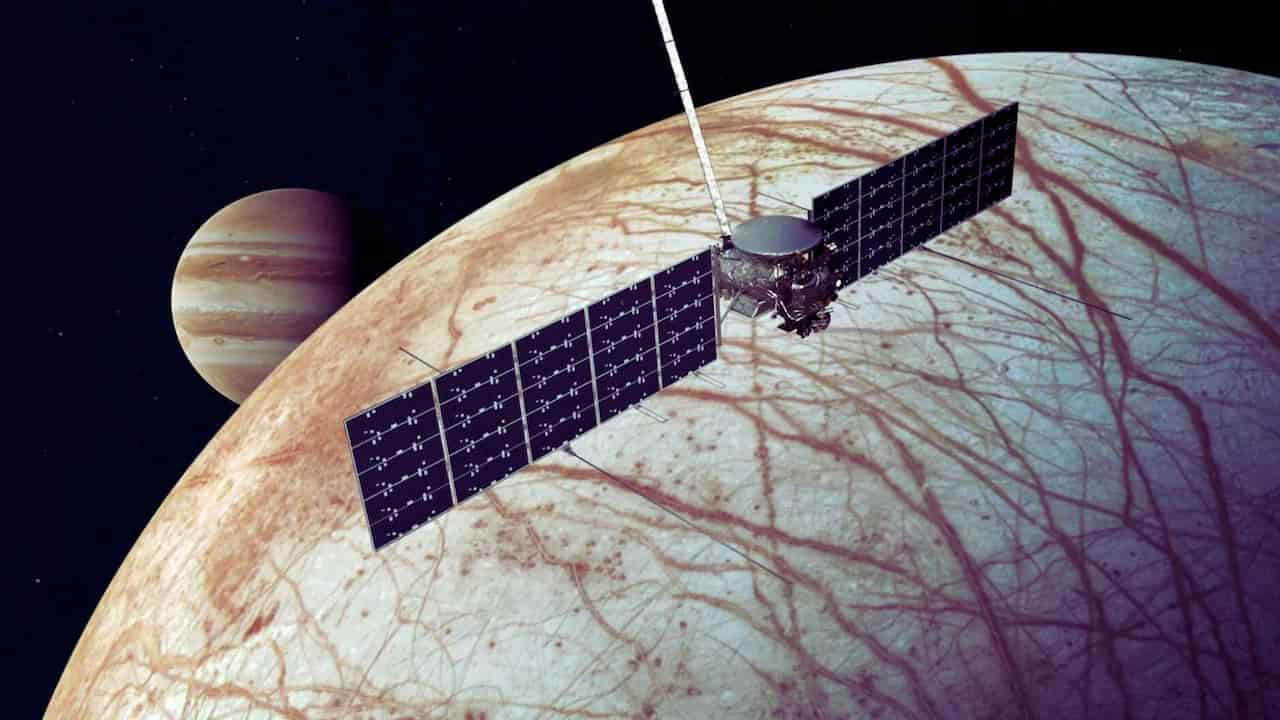Europa Clipper Mission: Hunting for Life in Jupiter’s Ocean Moon
NASA’s Europa Clipper spacecraft is ready to embark on a groundbreaking mission to one of Jupiter’s most intriguing moons. As scientists prepare to explore Europa’s hidden ocean, the hunt for potential life beyond Earth will kick into high gear.
After years of planning, the $5.2 billion Europa Clipper mission is set to launch on a SpaceX Falcon Heavy rocket as early as October 13, 2024. This ambitious project aims to unravel the mysteries of Europa, an icy world that might harbor the right conditions for life.
Europa, about the size of Earth’s moon, has captured the imagination of scientists for decades. Its surface is a frozen landscape of crisscrossing cracks and ridges, but beneath this icy shell lies a tantalizing secret: a vast ocean of liquid water.
“Europa is our best bet for finding life in our solar system, outside of Earth,” says Dr. Sarah Johnson, a planetary scientist at NASA’s Jet Propulsion Laboratory (JPL). “We think it has all the ingredients necessary for life as we know it: water, energy, and organic compounds.”
The Europa Clipper spacecraft, standing as tall as a giraffe with solar panels wider than a basketball court, will make the long journey to Jupiter. It’ll take nearly six years to reach its destination, arriving in April 2030.
Once there, Clipper won’t simply orbit Europa. Instead, it’ll perform a complex dance around Jupiter, swooping past Europa 49 times over four years. These flybys will bring the spacecraft as close as 16 miles above Europa’s surface, allowing its instruments to peer beneath the ice and study the moon in unprecedented detail.
The mission’s goals are ambitious:
- Map Europa’s surface in high resolution
- Measure the thickness of its icy shell
- Search for subsurface lakes
- Look for recent eruptions of water into space
- Analyze Europa’s thin atmosphere for signs of ocean material
One of the most exciting possibilities is the chance to fly through plumes of water that might erupt from cracks in Europa’s surface. If these plumes exist, they could give scientists a direct sample of Europa’s ocean without having to drill through miles of ice.
“If we can catch a plume, it would be like striking scientific gold,” explains Dr. Johnson. “We could analyze the chemistry of Europa’s ocean from millions of miles away.”
The Europa Clipper carries a suite of cutting-edge instruments to tackle these challenges. Its radar will attempt to penetrate the ice to measure its thickness and look for pockets of water. Powerful cameras will map the surface in stunning detail, while spectrometers will analyze the chemical makeup of materials on Europa’s surface and in its thin atmosphere.
The mission faces significant hurdles. Jupiter’s intense radiation environment constantly threatens the spacecraft’s electronics. To combat this, Clipper will follow a looping orbit that takes it far from Jupiter between close passes of Europa.
“It’s like a cosmic dance,” says Flight Director Maria Rodriguez. “We dive close to Europa to gather data, then retreat to safer distances to process and transmit that information back to Earth.”
The Europa Clipper mission represents a new chapter in our search for life beyond Earth. While it’s not designed to detect life directly, it will tell us if Europa could support it. The results could reshape our understanding of where life might exist.
“We’re on the cusp of something truly revolutionary,” Dr. Johnson adds. “If Europa’s ocean proves to be habitable, it would mean that the conditions for life might be much more common in our galaxy than we ever imagined.”
As the countdown to launch begins, scientists and space enthusiasts are holding their breath. The Europa Clipper mission promises to unlock the secrets of this enigmatic moon and possibly change our view of life in the cosmos forever.
The hunt for life on Europa is about to begin. Are we ready for what we might find?
